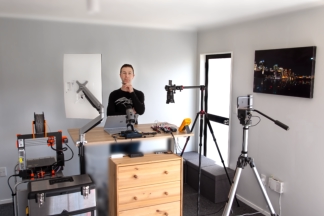



The
material
presented
below
concerns
the
practical
aspects
of
online
education
–
what
works
and
what
doesn’t.
It
draws
on
the
results
of
running
degree
level
engineering
courses
fully
online
over
the
span
of
several
years.
It
outlines
the
key
features
of
the learning environment and the approach I use.
If
you
find
the
below
material
interesting
and
have
some
questions
please
send
them
to:
education@carwhisperer.co.nz.

Creating Effective Online Learning Environment




The
next
thing
I
want
to
bring
your
attention
to
is
an
example
of
the
learner
management
system
that
I
utilise.
It
contains:
course
outline,
student
marks
and
progress,
due
dates,
project
descriptions,
course
notes,
video
lectures,
and
supplementary
material.
The
example
below
covers
one topic of the course.

I
utilise
a
project-based
approach
where
the
student
takes
an
active
part,
and
stay
clear
of
“show
what
you
have
remembered”
approach.
This
applies
to
the
final
exam
as
well.
About
ten
years
ago
I
put
a
short
presentation
on
the
matter.
It
contains
the
recording
of
the
in-class
environment
created by the two approaches I’ve mentioned above.


Students
have
access
to
the
following
learning
resources
(digital
content):
course
notes,
additional
reading
material,
and
video
lectures.
By
far
the
majority
of
our
communication
takes
the
form of a forum. Some examples from the course notes and video lectures are presented below.


The
key
assessment
tool
I
use
is
a
video
report
produced
by
students
where
they,
first
of
all,
demonstrate that they have completed their task successfully and explain how they got there.

Perhaps
the
most
enigmatic
thing
about
it
is
that
I
observe
that
the
students
put
unprecedented
effort
as
compared
to
when
I
lectured
the
same
course
in
the
class.
I
am
still
in
the
process
of
investigating why that might be.



Perhaps,
we
should
start
by
saying
a
few
words
on
how
I
teach.
The
video
below
is
a
short
extract from the introductory lecture for one of the courses I have built.
Educational Portfolio
















